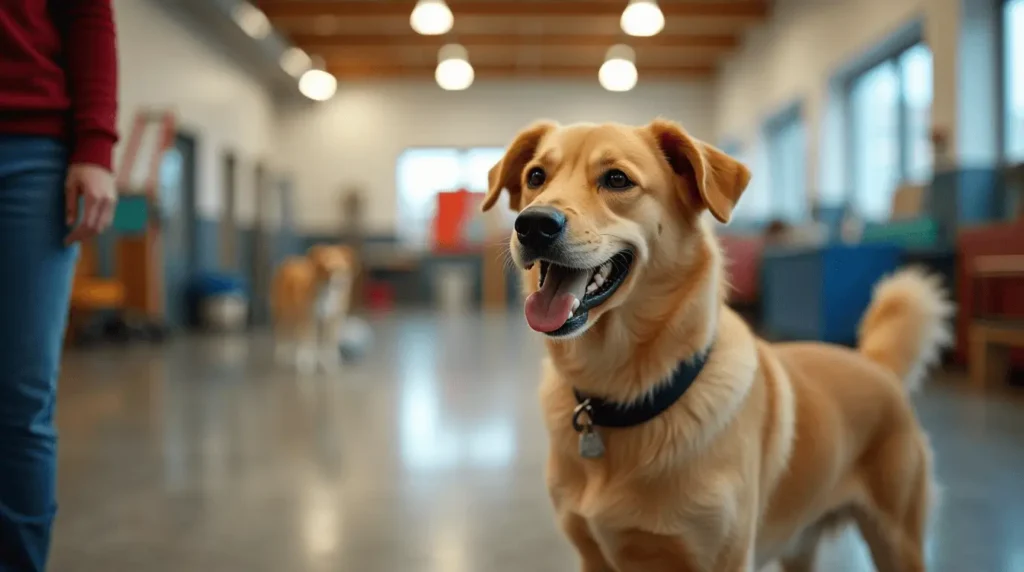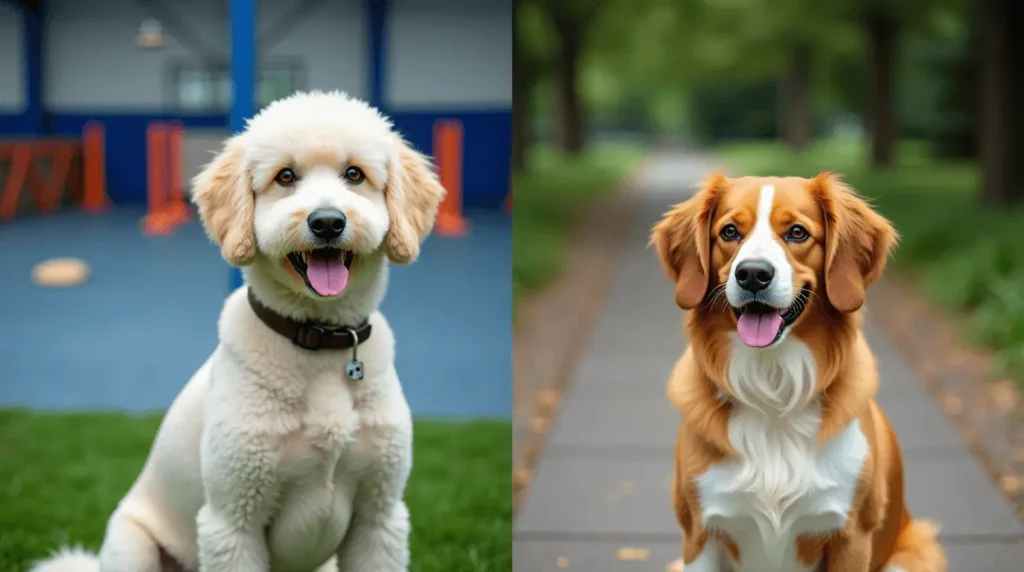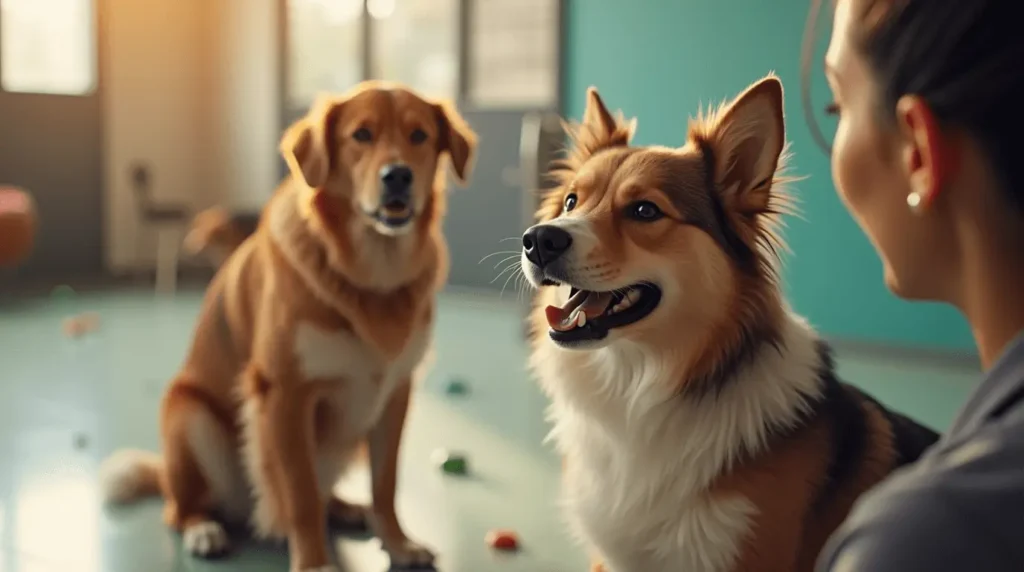Board and Train Dog: Tips for a Healthy, Happy Dog
Why Board and Train Dog Programs Matter
If you’re looking to improve your dog’s behavior and overall well-being, a board and train dog program can be an effective solution. These programs provide professional training in a structured environment, helping your dog learn new skills, reinforce positive behaviors, and address any problematic behaviors. In this guide, we’ll share tips on how to ensure your dog stays happy, healthy, and well-trained through a board and train dog approach.
In this comprehensive guide, we will explore everything you need to know about dog training and care. Whether you’re a first-time dog owner or a seasoned pro, this article will help you understand the key factors that contribute to your dog’s well-being and development.
Choosing the Right Dog Breed for Board and Train Dog Programs
Choosing the right breed is the first step in providing a suitable environment for your new dog. Some dogs may be easier to handle and train, while others might benefit more from a board and train dog program to address specific behavioral needs. If you’re new to dog ownership, selecting a breed that is known for being friendly, trainable, and adaptable can make the process smoother. However, for breeds that are more challenging to train, a board and train dog approach might be the ideal solution.
Best Dog Breeds for First-Time Owners and Board and Train Dog Programs
Want a well-behaved, joyful pup? 🐕💡 Explore expert tips on board and train programs for your dog!
When selecting a dog breed, consider one that fits your lifestyle and energy level. Some dogs are easier to handle, but if you’re dealing with a more independent or stubborn breed, a board and train dog program can help. Here are some dog breeds that are perfect for first-time owners:
- Labrador Retriever: Known for their friendly and energetic nature, Labradors are easy to train and respond well to a board and train dog program for additional structure and discipline.
- Golden Retriever: Similar to Labradors, Golden Retrievers are also friendly and highly trainable. However, if you need assistance with behavioral training, enrolling in a board and train dog program can make the process quicker and more efficient.
- Poodle: With their intelligence, Poodles are easy to train but benefit from positive reinforcement. A board and train dog program can ensure that they learn appropriate behaviors and commands effectively.
- Cavalier King Charles Spaniel: These small, affectionate dogs are well-suited to first-time owners. However, like all breeds, they may benefit from a board and train dog program to help instill good habits early on.
Active Dog Breeds That Benefit from Board and Train Dog Programs
If you are someone who enjoys outdoor activities, running, or hiking, you may want a more active dog. Certain breeds thrive on physical exercise and need a lot of stimulation. Some breeds that fit this category include:
- Border Collie: Border Collies are known for being one of the most intelligent dog breeds. They are also highly energetic and require both mental and physical exercise to stay happy. They excel in agility and obedience training.
- Australian Shepherd: Like the Border Collie, Australian Shepherds are intelligent, agile, and love to be active. They thrive in environments where they can run and play, making them ideal for active individuals or families.
- Siberian Husky: Siberian Huskies are built for endurance and enjoy long runs. They are independent and can be a bit stubborn, but with proper training, they make loyal and fun companions.
- Dalmatian: Dalmatians are energetic dogs that love to run and play. They are highly social and require regular exercise and mental stimulation.

How to Care for Your Dog: Tips for Board and Train Dog Programs
Feeding Your Dog the Right Diet for Board and Train Dog Programs
Proper nutrition is the foundation of your dog’s health. A balanced diet ensures that your dog receives the essential nutrients to grow, stay active, and maintain a healthy weight. Here’s what you need to know about feeding your dog:
- Puppies: Puppies require a diet rich in protein and nutrients to support their rapid growth. Look for puppy food that’s formulated to meet their energy needs.
- Adult Dogs: Once your dog reaches adulthood, it’s important to adjust their diet based on their size, breed, and activity level. Generally, adult dogs should be fed a balanced diet with a moderate amount of protein and fat.
- Senior Dogs: Older dogs often require fewer calories, but more nutrients to support their joints and immune system. Senior dog food often contains glucosamine and other joint-supporting ingredients.
- Portion Control: Avoid overfeeding your dog. Use the recommended serving sizes based on your dog’s weight, age, and activity level. Overfeeding can lead to obesity, which can lead to a range of health problems, including heart disease and diabetes.
Regular Exercise: The Key to a Healthy Dog
Exercise is an essential part of dog care, as it helps maintain a healthy weight, strengthens the muscles, and provides mental stimulation. The amount of exercise your dog needs depends on their breed, age, and health condition.
- Active Dogs: High-energy breeds like Border Collies, Australian Shepherds, and Labrador Retrievers need at least one hour of exercise every day. They thrive on activities such as running, playing fetch, and agility training.
- Moderate Dogs: Breeds like Beagles and Bulldogs require 30 to 45 minutes of exercise per day. These dogs enjoy walks, playtime in the yard, and occasional trips to the dog park.
- Senior Dogs: Older dogs may have lower energy levels but still benefit from regular, low-impact activities like short walks and playtime.
Dog Socialization and Playtime
The Importance of Socializing Your Dog
Socialization is essential for your dog’s development and well-being. Proper socialization helps your dog grow into a well-adjusted, confident, and friendly companion. Without adequate exposure to new experiences, dogs can develop fear, anxiety, and aggressive behaviors.
- Early Socialization: The critical socialization period for puppies is between 3 and 14 weeks old. During this time, puppies are more open to learning new experiences. Introducing them to various people, other dogs, and different environments will help them become well-rounded adults.
- Ongoing Socialization: Even adult dogs can benefit from socialization. Regularly introducing your dog to new situations, such as meeting other dogs or going on different types of outings, can help keep them comfortable in unfamiliar settings.
- Benefits of Socialization: A well-socialized dog is less likely to develop anxiety issues, aggression, or fearful behavior. They’re more likely to interact positively with other dogs and people, making outings like trips to the dog park or vet visits more enjoyable.
Playtime and Mental Stimulation
In addition to physical exercise, dogs also need mental stimulation to stay happy and engaged. Dogs are intelligent creatures that require challenges to avoid boredom, which can lead to behavioral issues like chewing, digging, or excessive barking.
- Interactive Toys: Toys that challenge your dog’s brain, like puzzle toys and treat-dispensing toys, are excellent for providing mental stimulation.
- Training Games: Incorporating training into your dog’s playtime can be both fun and productive. Teaching your dog new tricks or practicing commands through games can help keep their mind sharp.
- Social Play: Dogs love to play with other dogs. Arrange playdates or take your dog to dog parks to let them interact with other dogs and practice their social skills.

Traveling with Your Dog
Preparing for Car Travel with Your Dog
Traveling with your dog can be a fun and rewarding experience, but it requires careful planning to ensure your dog’s safety and comfort. Whether you’re going on a long road trip or just heading to the vet, here are a few tips to make car travel easier for both you and your dog:
- Secure Your Dog: Use a dog seat belt harness or crate to keep your dog safe while traveling. This prevents them from moving around the car and minimizes distractions while driving.
- Frequent Breaks: During long trips, stop every 2-3 hours to allow your dog to stretch their legs, go to the bathroom, and drink water. This is especially important for large dogs and puppies.
- Prepare for Motion Sickness: Some dogs experience motion sickness during car rides. Avoid feeding your dog a large meal before traveling, and consider talking to your vet about motion sickness medication if your dog is prone to it.
Flying with Your Dog
If you plan to travel by airplane with your dog, it’s important to be prepared. Not all airlines have the same pet policies, so it’s essential to research and plan ahead to make the trip as smooth as possible.
- Check Airline Pet Policies: Some airlines allow pets to travel in the cabin if they’re small enough to fit in a carrier under the seat. Larger dogs may need to fly as cargo. Be sure to check the airline’s pet policies and book your pet’s flight well in advance.
- Health Certificates: Many airlines require a health certificate from your vet, especially for international flights. This certifies that your dog is fit to travel and is up to date on vaccinations.
- Comfortable Crates: Make sure your dog is comfortable in their travel crate, which should be large enough for them to stand up, turn around, and lie down. Place familiar items, such as their blanket or toy, in the crate to provide comfort.

Advanced Training and Obedience
Teaching Advanced Commands
Once your dog has mastered basic commands, you can start teaching more advanced skills to keep their minds engaged and further strengthen your bond. Advanced training is also useful for dogs that need to perform specific tasks, such as service dogs or working dogs.
- Heel: Teaching your dog to walk by your side without pulling is an essential skill for enjoyable walks. To teach this, use treats to reward your dog for staying next to you and walking at your pace.
- Fetch: Fetch is a fun game that also helps teach your dog how to release an object when asked. Start by tossing a toy short distances, then encourage your dog to bring it back to you before rewarding them.
- Leave It: This command helps teach your dog to stop engaging with something they shouldn’t, whether it’s food on the floor or something they’re chewing on. Use positive reinforcement when they obey this command.
Dealing with Problem Behaviors
Every dog can display challenging behaviors, but with patience and consistency, these behaviors can often be corrected. Here are some common problem behaviors and how to address them:
- Separation Anxiety: Some dogs experience anxiety when left alone, leading to behaviors like excessive barking or destructive chewing. To address this, gradually desensitize your dog to being alone by leaving them in a room by themselves for short periods and slowly increasing the duration. Comfort items like a favorite toy or blanket can also help ease their anxiety.
- Aggression: Aggressive behavior towards people or other animals can be dangerous and difficult to manage. It’s important to consult a professional dog trainer if aggression is an issue. Positive reinforcement, consistent training, and socialization can often help reduce aggressive tendencies.
- Excessive Barking: Excessive barking can be caused by a variety of factors, including boredom, anxiety, or territorial behavior. Identifying the cause is key to addressing it. Provide more mental stimulation, reduce anxiety through crate training, or train your dog to stop barking on command.

Health Monitoring and Regular Veterinary Care
Regular Checkups
Routine veterinary visits are vital for keeping your dog healthy. Just like humans, dogs need regular checkups to detect health issues early and prevent potential problems.
- Annual Vet Visits: Most dogs need to see the vet once a year for a general checkup, including vaccinations, parasite prevention, and dental cleaning. Senior dogs, on the other hand, may need to see the vet every six months.
- Vaccinations: Keeping your dog’s vaccinations up-to-date is essential to protect them from diseases like rabies, parvovirus, and distemper. Speak to your vet about a vaccination schedule based on your dog’s age, health, and lifestyle.
- Parasite Prevention: Fleas, ticks, and worms are common parasites that can cause serious health problems. Your vet can recommend parasite prevention treatments, including flea and tick prevention and deworming medications.

Understanding Common Health Issues
Knowing the common health issues that affect dogs can help you monitor for any changes in your dog’s behavior or health. Some common issues include:
- Heart Disease: Older dogs, especially larger breeds, are at risk for heart disease. Symptoms may include coughing, lethargy, and difficulty breathing. Regular vet checkups can help detect heart problems early.
- Diabetes: Diabetes can affect dogs, especially older dogs or those that are overweight. Symptoms of diabetes include excessive thirst, frequent urination, and weight loss. A balanced diet and regular exercise can help manage the condition.
- Allergies: Dogs can suffer from environmental or food allergies. Symptoms include itching, redness, or digestive issues. Your vet can help identify the cause of the allergies and recommend treatment.
Conclusion: A Lifelong Commitment to Your Dog’s Care
Owning a dog is a lifelong commitment that requires dedication, patience, and love. By providing your dog with proper training, nutrition, exercise, grooming, and medical care, you ensure that they live a long and happy life. The relationship between you and your dog is built on trust, understanding, and mutual respect.

